With the right tools, kids don’t have to just sit back and play video games. They can learn to develop and design their own games. Video game design teaches kids about art and technology in a hands-on way while building problem-solving, critical thinking, and creative skills.
If your child loves playing video games and wants to go behind the scenes or you find them drawing levels and characters, video game design is a great fit. Students in our coding classes love customizing the looks, characters, and themes for their games. It’s rewarding to see my students’ individuality come out and how excited they are when their ideas form in front of them. Not only are they learning the coding languages, the classes give them the space to be creative and innovative.
Whether your child wants to become a professional game designer or simply have fun with a creative outlet, it’s a worthwhile activity to design a game. In this article, I’ll explain how kids can get started and kid-friendly tools to use in video game design.
What is video game design for kids?
Video game design is the process of creating the rules, content, and gameplay for a video game. It is one part of game development and includes computer science, graphic design, user experience, and creative writing.
Game design is often a collaborative effort involving multiple roles, from artists and writers to programmers and level designers. It’s also a creative and technical process where kids can learn about art, coding, and more. Game design requires a lot of creativity, problem-solving, and critical thinking.
Steps for Video Game Design
How exactly does video game design work? This is an outline of the video game design and development process.
- Come up with a game concept
- Put together a Game Design Document
- Design the art and assets
- Design the user interface (UI)
- Write the code
- Test the game & reiterate
- Launch!
1. Come up with a game concept
The first step for video game designers is to come up with a concept that they think people will enjoy. They may have certain requirements they are trying to meet or a specific audience the game will cater to. Many designers are inspired by their personal interests or experiences. This is the time to brainstorm the core game ideas, such as the setting, plot, characters, genre, and gameplay style.
In Pacman, the game concept is a maze game where a ghost eats dots for points while avoiding the ghosts.
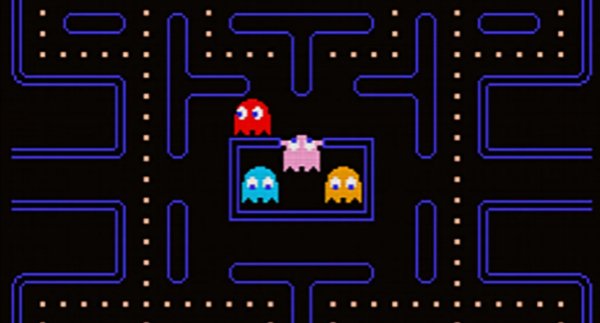
2. Put together a Game Design Document
The game design document is like a blueprint for the game. It will guide the rest of the design and development process. Once there is a clear concept for the game, the game information should be written down in a Game Design Document. This is where designers expand on the original concept and solidify what the game will look, feel, and play like. This might include outlines and storyboards to stay organized.
Here is an example of a one page Game Design Document.
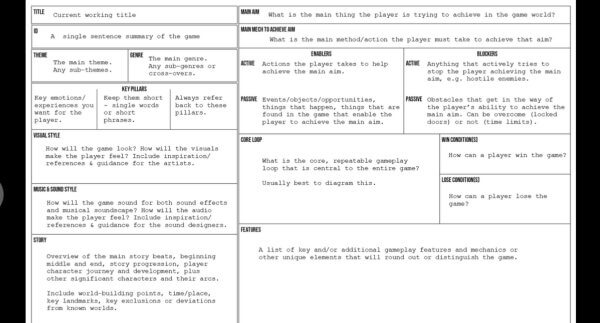
3. Design the art and assets
In this step, the visual elements of the game are created like the characters, levels, and special items. This is the most artistic part of the design process. Artists use different software and techniques to design the 2D or 3D graphics that represent the game.
A fantasy game might include assets like these:
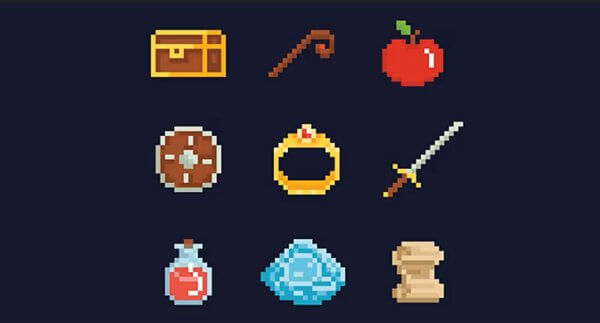
4. Design the user interface (UI)
User Experience (UX) and User Interface (UI) design ensure the game is easy to play and navigate. This step includes designing the menus, buttons, and settings screens. It also covers how the players navigate through the game like the instructions and dialogue.
This is the start screen UI for Spongebob’s The Patrick Star Game, you can also see more of the game UI.
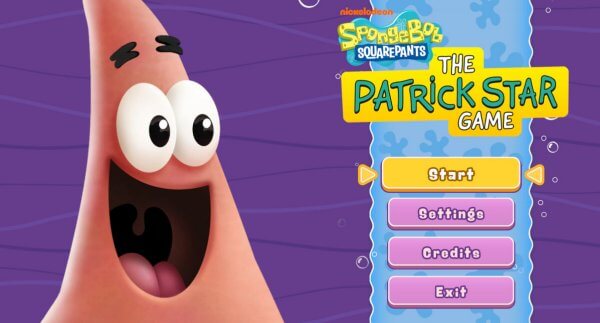
5. Write the code
Now, it’s time to put the pieces together by writing the code for the game. This usually starts with putting together a prototype or mockup of the game to test the functionality. Developers break the game down into smaller parts and build each of them. The code controls how the players move, the score, levels, and more. They tie together the game mechanics with the art design to bring the game to life.
6. Test the game & reiterate
Testing is an important part of the development process to make sure everything works as expected and the game is free of bugs. Instead of developing the entire game at once, many developers will code parts, test them, fix the bugs, and then continue. They can also test the game in parts or its entirety with select family and friends to get feedback on how to improve it.
7. Launch!
After a few cycles of development and testing, it’s time to release the game! This is when you make the game accessible to other players. You can share the game on different gaming platforms or social media. Even after launch, most developers continue to make improvements through a feedback cycle and different game updates.
Skills Kids Learn from Video Game Design
There are a lot of important skills that kids gain through designing a video game. It’s the perfect activity to expand their artistic abilities through design and technical skills through coding. They’ll also learn:
- Creativity
- Problem-solving
- Logical Thinking
- Communication & Collaboration
- Confidence
Creativity
If the game design process is anything, it’s creative! In every part of the design and development process, kids have to think creatively and the possibilities are endless. There is no shortage of types of genres, characters, or gameplay abilities that kids can work on. Kids have to visualize a world and tell a story through their artwork and gameplay. The world-building, artistry, and storytelling are important parts of any game. Whatever is in their wildest imagination can be represented in a game.
Problem-solving
The development and testing process involves finding bugs and figuring out how to fix them. This requires a problem-solving process and patience, especially for a robust game with a lot of features. There will also be times when the original plan doesn’t work and kids are forced to pivot and think of a new solution. For example, if a game feature that your character heavily relied on can’t be executed, what can you do instead? These types of problems require kids to think creatively about the specific problem to come up with a plan.
Logical Thinking
Coding naturally develops logical thinking skills. Kids think step by step about the game mechanics and the effect of each action. Designing mechanics like scoring, health, or player movements requires logical structuring to ensure each action has a specific effect. They learn the importance of sequencing, like making sure each action flows logically and doesn’t interrupt the game’s flow.
Communication and Collaboration
In most cases, games will require the knowledge and effort of more than one person. This means kids have to learn to effectively communicate with different types of people and across multiple mediums, for example in writing or face to face. They’ll have to explain their ideas and concepts as well as ask questions and give and take feedback. This fosters the ability to communicate with others and work together as a team.
Confidence
Creating their own game will be something that kids are proud of and builds their self-confidence. Kids learn resilience through the problems they solve and all the small wins they have throughout the process. They also develop a strong sense of accomplishment through completing a game and have a tangible project to show for it.
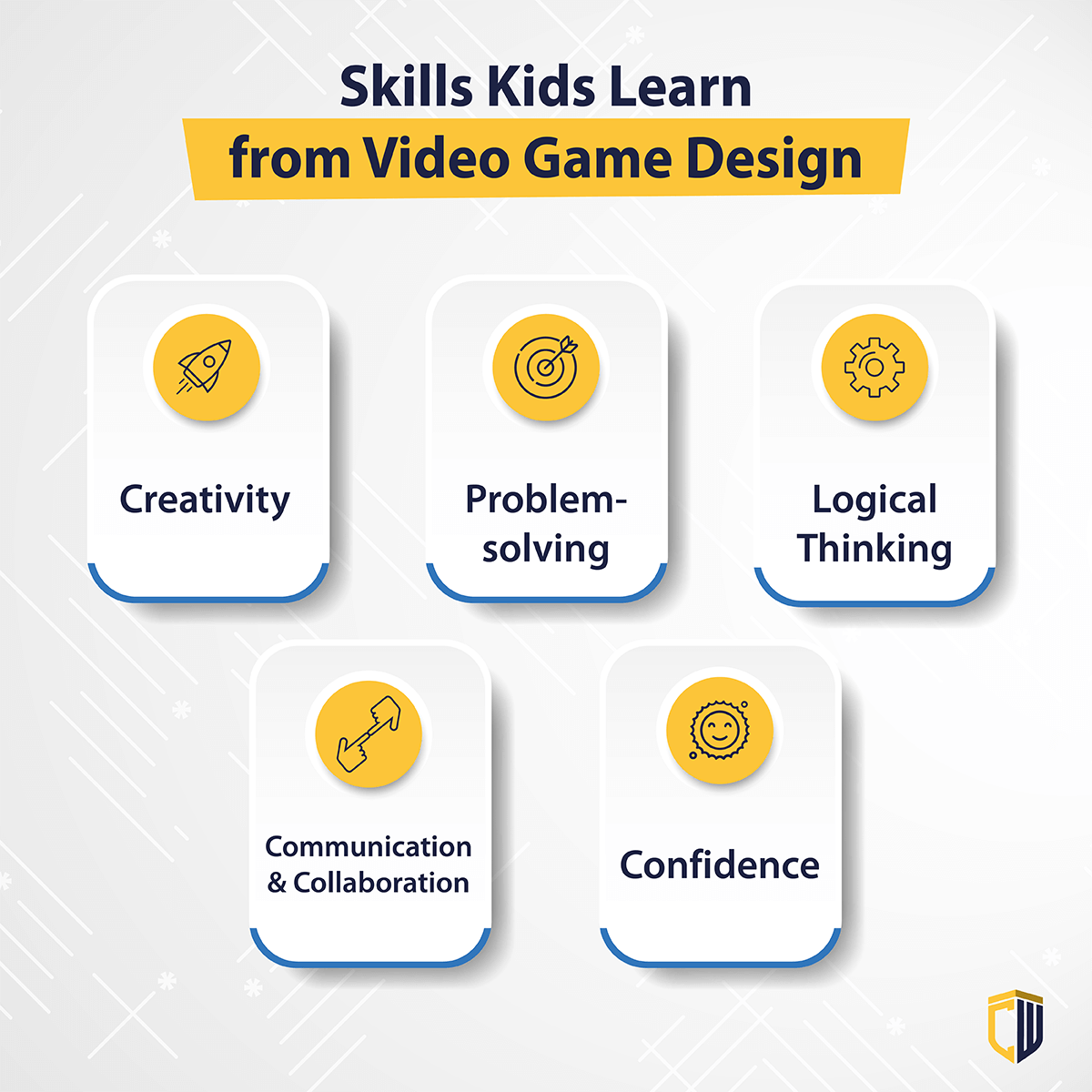
Not convinced? Read the 26 Reasons Learning to Code Benefits Your Child.
5 Free Kid-Friendly Game Design Tools
Ready to jump into designing a game? Use one of these free kid-friendly game design tools.
- Scratch
- Roblox studio
- Game Maker
- Unreal Editor
- Unity
Scratch
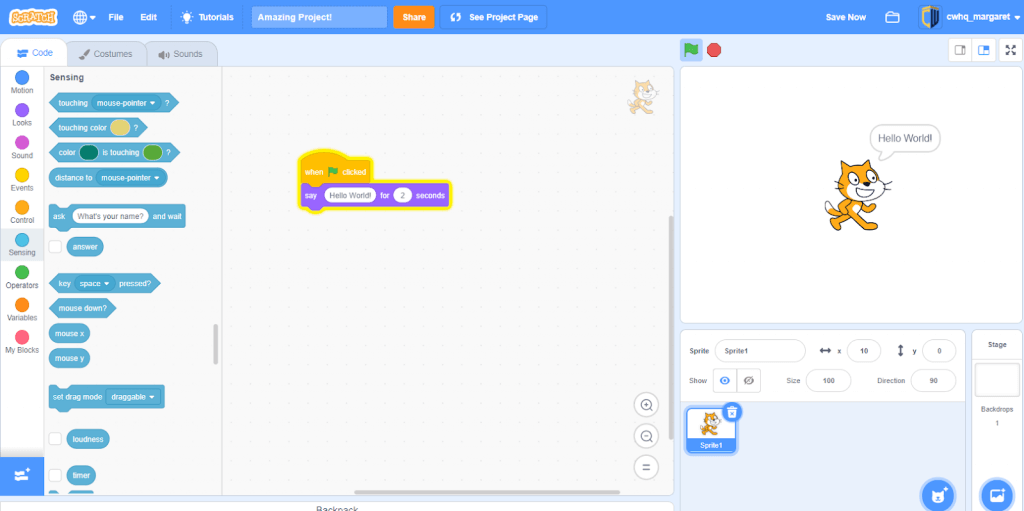
Best For: Ages 8+; beginners with no coding experience.
Description: Designed by MIT, Scratch is a beginner-friendly platform where kids can drag-and-drop blocks to create simple games, animations, and stories. Scratch is a block-coding language which is ideal for younger students with limited typing skills. It’s the main tool we use in our elementary school coding program because it teaches fundamental coding concepts in a simple way.
Key Features:
- Simple interface with blocks that snap together, introducing programming logic.
- Large library of tutorials and a community where kids can share their creations.
- Encourages creativity and teaches the basics of logic and sequence without needing complex code.
Roblox Studio
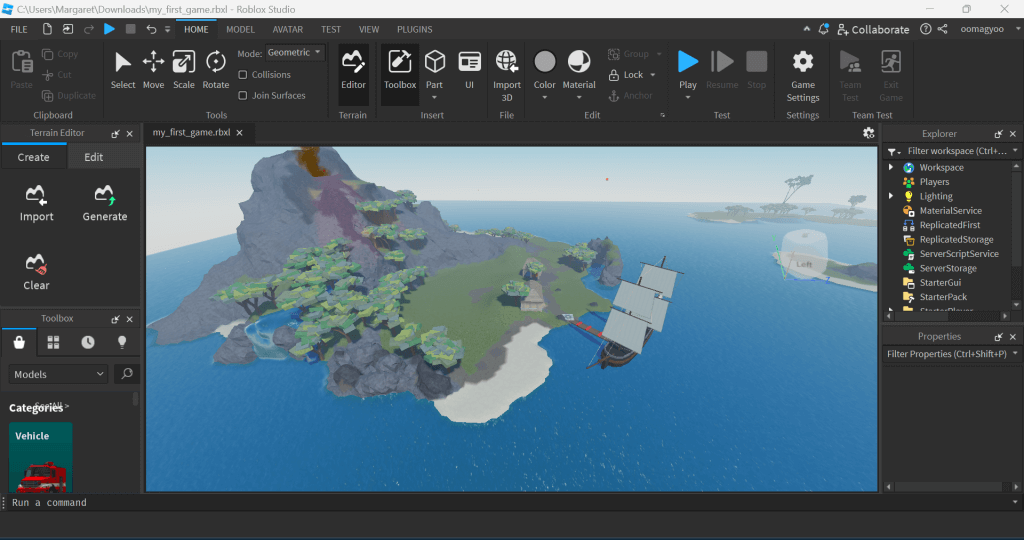
Best For: Ages 10+
Description: Roblox Studio is a 3D game design platform where kids can build games and experiences within Roblox, using Lua scripting for added customization. This platform is used by beginners and professionals alike. And it’s quick to get started, it only takes 15 minutes to build a simple obby game!
Key Features:
- Enables kids to design 3D worlds, characters, and interactions.
- Adds Lua scripting capabilities for more advanced game logic and mechanics.
- Games can be shared and played by millions in the Roblox community.
Game Maker Studio 2
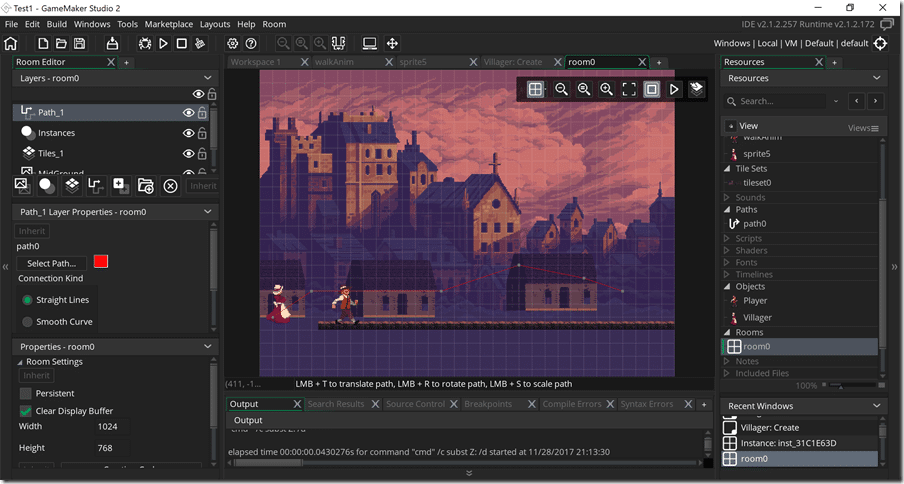
Best For: Ages 12+
Description: GameMaker Studio is a flexible game development engine that allows users to create 2D games with or without coding using its drag-and-drop interface or the GameMaker Language (GML). GameMaker is relatively easy to learn compared to other game engines and it’s possible to make a game without much coding.
Key Features:
- Drag-and-drop coding that offers visual scripting for beginners.
- Games can be exported to multiple platforms, including PC, mobile, and console.
- Provides tools for creating and managing sprites, animations, and sound.
Unity
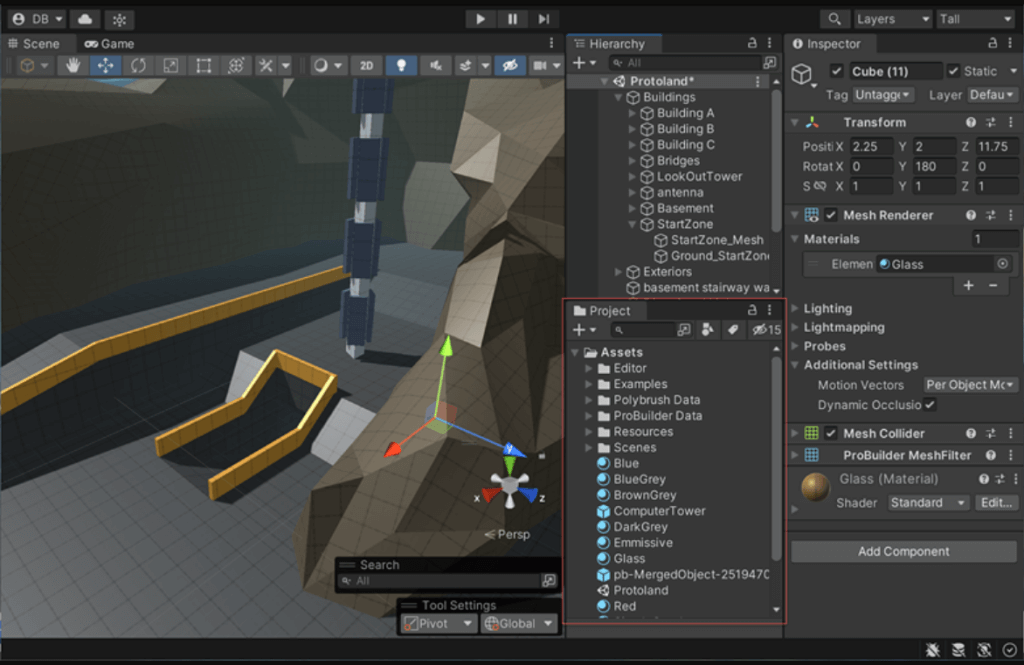
Best For: Ages 13+
Description: Unity is a popular game engine for creating both 2D and 3D games known for its extensive tutorials, community support, and compatibility with various platforms.
Key Features:
- C# scripting for complex game mechanics through C# programming.
- Access to a wide range of assets, including 3D models, textures, sounds, and plugins.
- Games can be built for PC, mobile, web, and console.
Unreal Engine
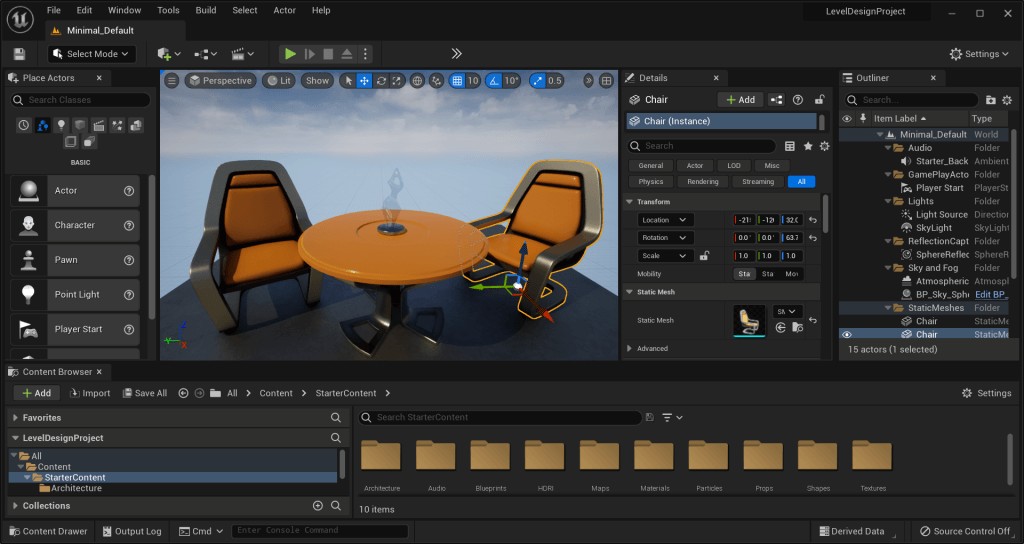
Best For: Ages 13+
Description: Unreal Editor is a professional-grade game development tool used in the gaming industry, offering both a visual scripting tool (Blueprints) and powerful 3D game design capabilities.
Key Features:
- Blueprints: Visual scripting system for building game mechanics without code.
- Advanced Graphics: High-quality rendering for realistic 3D environments and effects.
- Extensive Asset Marketplace: Access to thousands of pre-made assets and resources.
Fun Game Design Projects for Beginners
Kids, ages 8 and up, can try designing a game using our free projects and tutorials.
- Flappy Bird
- Rocket Landing
- Flying Space Cat
- Disappearing Snowman
Flappy Bird Game
Flappy Bird is a version of a popular mobile game application. The player controls the bird while it flies through the air avoiding the pipe obstacles. It replicates an existing game on the Scratch platform. Kids can design their own assets or choose from the Scratch library. This game is fully customizable.
Rocket Landing Game
Rocket landing is a simple coding activity where kids have to land a rocket on a moving platform. They’ll learn how to alert the winners and losers which is a common game element. There are only a few elements to code, so the concepts and code are easy to follow. This activity also includes a full tutorial video and printable PDF for extra support to complete it.
Flying Space Cat Game
In this game, kids travel across space collecting crystals and use game logic to keep score. Collecting is a popular mechanic in games and is easily coded in Scratch with the same basic logic. They’ll learn how to animate a moving background and in just a few steps have a completed game. This is an easy activity for beginner game designers.
Design a Flying Space Cat game
Disappearing Snowman Game
This is a classic word game turned into JavaScript code. Kids will use code to check for matches between their secret word and the player’s, otherwise their snowman starts to melt. A nice starter activity for kids learning vanilla JavaScript. They can design their own graphics and design any background or theme.
Design a Disappearing Snowman game
Video Game Design Classes for Kids
Our kids coding program builds foundational coding skills through coding games, websites, and apps. While not every class is focused on game development, the overall program gives kids the skills to design and develop any game they want.
Scratch Game Design
Animations and Games with Scratch (Ages 8-10, Beginners)
Students are introduced to block programming in Scratch and how to think like a programmer while building fun, interactive projects and games. This unique class uses the Scratch platform to make learning complex concepts and advanced programming skills fun!
Logic with Scratch (Ages 8-10, Intermediate)
Students build on what they learned in Animations and Games with Scratch while learning new programming techniques and building more sophisticated apps and games. This course leverages the Scratch platform and block-based programming language to make programming easy and enjoyable for young learners.
Python Game Design
Intro to Programming with Python (Ages 11-13, Beginners)
Students learn fundamental programming concepts while building fun, interactive projects in Python. Our unique classes use custom Python libraries to make programming easier and more enjoyable.
Beyond Basics with Python (Ages 11-13, Intermediate)
Students are challenged to move beyond the basics of Python through building interactive apps and games. Our courses build a solid technical foundation while also cultivating an enthusiasm for the art and discipline of programming.
Intro to Python (Ages 14-18, Beginners)
Students learn fundamental programming concepts while building fun, interactive projects in Python. Our unique classes use a project-based approach to make programming more accessible and enjoyable for complete beginners and those returning to programming alike.
Learn Video Game Design & Development
Video game design is a worthwhile activity for kids at any age! It merges the creative with technical to produce something that kids can be proud of. It also practices important skills that will benefit them far into the future.
Get started with video game design in our kids coding classes. Learn the coding foundations kids need to build games. The classes are project-based so kids work on building a game, website, or app in every class.
Enroll today in our top-rated coding classes for kids to learn video game design.
